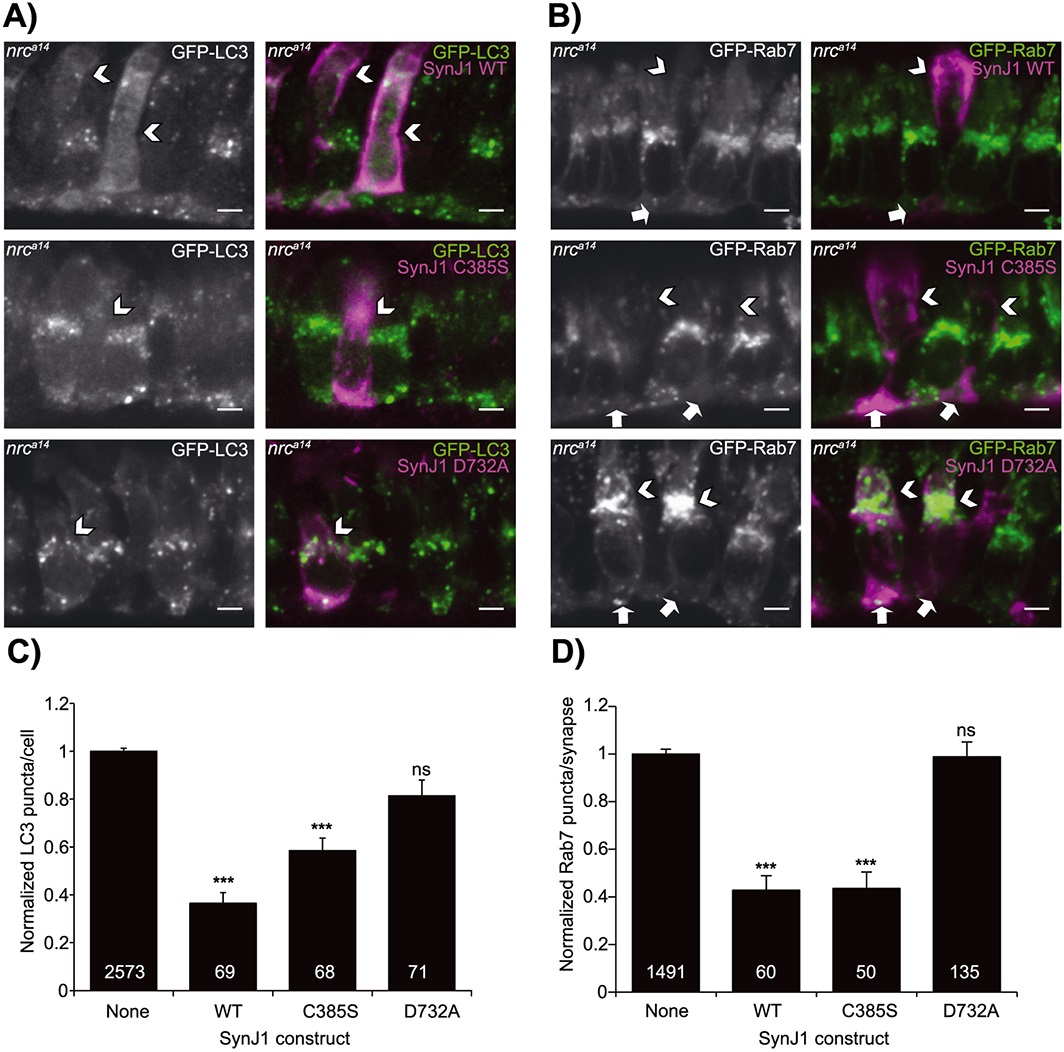Fig. 7
5′phosphatase activity of SynJ1 is required to rescue late endosome and autophagy phenotypes in nrca14 cones. Fixed sections of 5 days post-fertilization nrca14 A: Tg(TαCP : GFP-map1lc3b) and B: Tg(TαCP : GFP-rab7) larvae transiently expressing synaptojanin 1 (SynJ1)constructs (SJCs) in cones. Wild type SynJ1 was able to significantly rescue both the late endosome and autophagosome abnormalities in nrca14 cones. SynJ1 lacking SacI catalytic activity (C385S) also significantly rescued the late endosome and autophagosome defects. In contrast, the D732A construct was not able to rescue either the late endosome or autophagosome phenotypes. Arrows point to SJC-expressing cells (magenta in merge). Scale bar = 2 µm in all images. Results were quantified by counting the number of total C: LC3 puncta or D: Rab7 synaptic puncta in the SJC-expressing cells and normalized to the number of puncta in the non-SJC expressing cells in the same nrca14 larvae. Graph in C shows average normalized LC3 puncta per cell, and graph in D shows average normalized synaptic Rab7 puncta per cell. Error bars are SEM and n ≥ 50 cells for all conditions (exact n shown on graph). The rescue of both the total LC3 puncta and Rab7 synaptic puncta was significant for the wild type and C385S SJCs, but not for the D732A SJC (***p-value < 0.001 by one-way analysis of variance followed by Dunnett′s multiple comparison correction).

